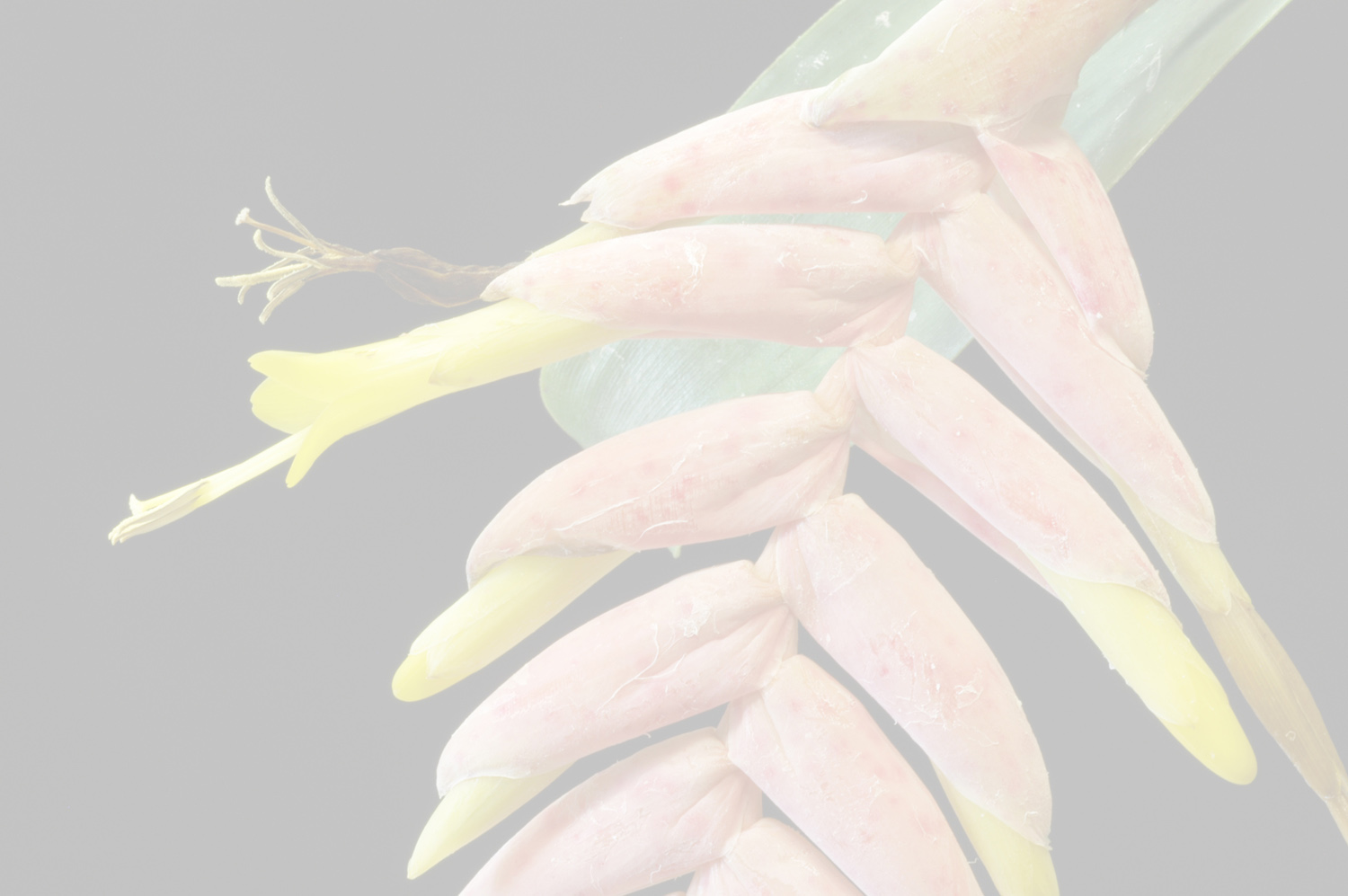

 Vriesea andreettae Rauh[as Vriesea andreettae (Rauh) J R Grant]
Vriesea andreettae Rauh[as Vriesea andreettae (Rauh) J R Grant]Diagnose: —Formae simplici Vrieseae cereicolae (Mez) L. B. Smith (= V. lopezii L. B. Smith, SamneCamiche, 1800 m. s. m. Dptm. La Libertad, Prov. Trujillo, Peruvia septentrionalis) similis, sed ab ea differt characteribus sequentibus: planta in partibus omnibus minor, stolonibus brevibus; inflorescentiae semper erectae (nec pendulae), 10-15 cm longae. Petala atro-indigotica; stamina inclusa, tantum stylus cum stigmatibus viridibus vel indigoticis exsertus. Observations: —See also W. Rauh in J. Brom. Soc 32(6): 266-7. 1982
Similar to an unbranched form of V. cereicola (Mez) L. B. Smith (Syn. Vriesea lopezii L. B. Smith, Samne-Camiche, 1800 m, Dptm. La Libertad, Prov. Trujillo, North-Peru) ( fig. 15) but differs from this as follows: plant in all parts smaller, only with short stolons; Inflorescence always erect, doesn't hsng, 10-15 cm long. Petals deep dark-blue-black; stamens enclosed, only style protruding with green to azure stigma.
The plant numbered 52 972 (June 1980) was collected from the same location.
V. andreettae resembles V. cereicola in habit, which occasionally has a simple inflorescence; which is however usually hanging, with a flexuous, excavated Rhachis and blue-violet Petals; stamens and style far protrude,( fig. 15).
The high Pass of Pachamama, what means like “rocks of the mother " (1650 m high), is not only a wonderful boulder-landscape caused by rock falls but forms also a weather-shield between the western Andes and the inner Andes at the same time, to the kalf desert dry valley of Sta. Isabel-Giron. Moisture laden the wind rises from the Pacific ocean into the narrow valley of the Rio Jubones, (Machala - Pasaje – high Pass Pachamama) condensing the moisture to form dense cloudbanks, that begins from the east to lie over the High Pass ( fig. 16, left). With the approach of high humidity, a rich Epiphytic vegetation, not only from lichens, develops on steep rocks and on the boulders you find (Usnea -, Parmelia-species), but also Bromeliads. Snow-white Tillandsia tectorum (fig.16. right) appear on steep rocks and boulders many times, including a virtually stemless form. The Ecuadorian form is the most attractive of all T. tectorum-forms. It grows with an undescribed form of T. disticha,( to 50 cm high, with long stolons at the base), T. mima, a very large funnel Tillandsia with grey waxy spikes, (not descernible, fig. 16, left), T. caerulea, T. latifolia var. divaricata, Pitcairnia heterophylla, Vriesea cylindrica, a Loxanthocereus with light carmine red flowers and Peperomia species.
With all these plants, Vriesea andreettae is socialized, just as another new Vriesea, that will subsequently be described as V. olmosana var. pachamamae.
Between the boulders, there is a a shrub vegetation with one grey leaved Croton species, Peperomia species, P. resedaeflora, a half-succulent species, Cnidoscolus spec. (“Mala mujer ", Jatropha macrantha.
Below the High Pass in direction of Sta. Isabel Bromeliad vegetation starts and the dry vegetation becomes prevalent. Over gigantic flat areas grows Croton bushes, cactus plants, among which are a white-fleecy, Espostoa species from the melanostele group, Opuntia macbridei, Opuntia pestifer, the succulent Euphorbia weberbaueri and a single tree of Acacia macracantha.Edited from (23-03-2023): Rauh 1983c. (protologue) Bromelienstudien (Mitteilung 14). I. Neue und wenig bekannte Arten aus Peru und anderen Ländern .